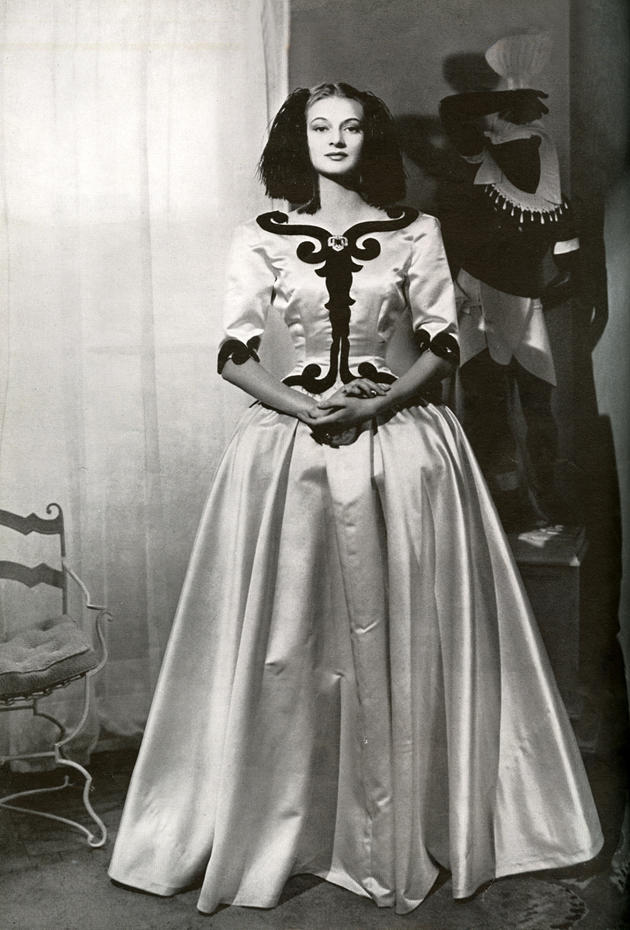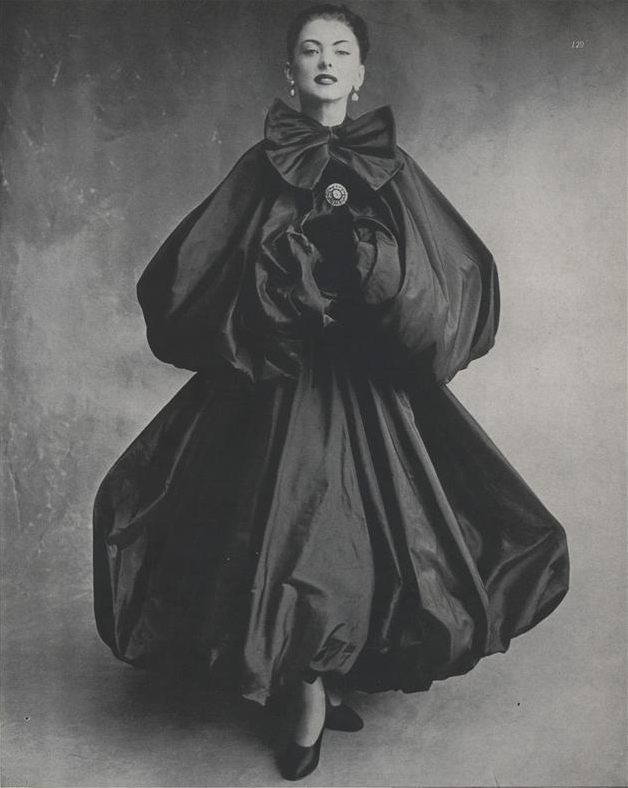Introduction
Cristobal Balenciaga was one of the most popular fashion designers and artists during World War II and the early postwar period. He created women silhouettes that were the true inspiration of the Spanish culture and traditions. However, Paris was the place that saw Balenciaga rise. He spent his childhood years with his seamstress mother in a village within Getaria town of Spain. His sewing skills at a tender age earned him a scholarship to Madrid where he would learn professional tailoring. From there, he started developing fashion designs that would attract the royal family and the nobility in Spain. Through their support, Balenciaga rose to become a remarkable brand in the European fashion industry.
History of Balenciaga Brand
Born in a village in the Basque region of Spain in the year 1895, Balenciaga spent much of his early life with his mother who worked as a tailor. After mastering the tailoring and design skills from her mother, Balenciaga won a scholarship to Madrid for further training in tailoring and design (Julia par. 1). He attained his early success in the native country where he opened the Boutique Eisa in Madrid and Barcelona cities. These included San Sebastian fashionable resort located at the seaside. The Spanish royal family and the members of nobility within the country favored the Balenciaga brand. Nevertheless, the Spanish Civil War disrupted his business in the country (Heilbrunn par. 2). As a result, he moved his business premises to Paris where the best world fashions were displayed.
Balenciaga joined the league of other talented designers such as Elsa Schiaparelli, Coco Chanel, and Mainbocher among others. He launched his first exhibition at the atelier of Avenue George V. His collections for the exhibition had a heavy influence of the Spanish Renaissance.
Because of his exceptional skills, Balenciaga was able to interpret a variety of historical styles throughout his fashion and design career. For instance, “Infanta gown” was interpreted by the traditional costumes of the Spanish princess as depicted in the portraits of Diego Velazquez (Julia par. 3). His heavily decorated “Jacket of Light” was influenced by the toreadors wear for bullfighting.
By the year 1939, the French media started to praise Balenciaga because of his revolutionary approach to creating the trending fashion. As a result, buyers from across the world were fighting to access their fashion collections. His clients could risk traveling during World War II from other parts of the world in search of the Balenciaga brand designs (Heilbrunn par. 6). One of his popular pieces is the square coat that had its sleeve cut in one piece together with the yoke.
His store had a variety of fashions with a spectacular combination of unique colors. He uniquely blended the black and brown laces with bright pinks. During the postwar period, the Balenciaga designs were streamlined to become one of the most popular brands in the fashion industry (Nicklas 439).

This figure shows Heilbrunn’s illustration of the Balenciaga’s jacket of light designed for women.
The clothing Balenciaga created was different from the popular and curvy shaped designs Christian Dior marketed as the new trends. On the other hand, Balenciaga preferred the fluid lines, which gave him the ability to change the relationship between the clothing and the body of a woman. Balenciaga dropped the waistlines and then raised them to enhance independent and natural waistlines for the wearers. In the early 1950s, the brand introduced the balloon jacket for women. It was an outstanding new look that covered the upper body (Heilbrunn par. 4). It provides a plinth for the user’s head. By the year 1957, Balenciaga created high-waist doll dresses. Balenciaga stylishly draped the cocoon coats and balloon skirts, which were exhibited as a single or double pouf.
With the founder’s innovative approach to fashion designs, the Balenciaga brand dominated the 1960s fashion industry. The brand continued to demonstrate collections made with unparalleled skills and unique beauty. It innovatively used fabrics made of bold materials, heavy clothing, and ornamental embroideries. As a result, Balenciaga created a working relationship with the Swiss house of Abraham.
They together developed the stiffer version of the silk-gazar, which Balenciaga used in making suits, evening wear, and day dresses (Miller par. 3). He created a pool of loyal clients such as Pauline de Rothschild, Duchess of Windsor, and Gloria Guinness among others who continued to appreciate the brand’s discrete approach to design. The closure of the Balenciaga salon in the year 1968 ended the career of this great tailor, fashion designer, and artist. Nevertheless, the influence of his work from the 1930s to 1960s is still felt like the most remarkable designs of the twentieth century (Julia par. 4).

Social Influence and Contests
The creativeness and innovative attributes of Balenciaga had significant influence in the society, especially in the European context. His outstanding designs and unique approach to fashion attracted the support of the Spanish nobility and royal family. He made the dresses and different wear for the royal families and respected people in Spanish society (Miller par. 5). As a result, high-class people from various countries would buy the Balenciaga fashions to retain their high social status. The brand was considered a luxury and the most expensive clothing. The Marquesa de Casa Torres identified his talent at a young age (Heilbrunn par. 5).
Although he learned from his mother who was a tailor, Balenciaga developed spectacular skills in sewing. As a way of supporting society, Torres sponsored him to learn professional skills in Madrid.
The social and financial support he received from various people and organizations made him change society in terms of the trending fashions. For instance, the couture house he designed and established in Paris acted as a symbol of a noble society. The store bore his name, which was also the brand of his designs. Many societies across the world were thrilled with Balenciaga’s designs. He maintained designs that targeted high-class people in society. As an abbreviation of the patronymic of his mother, Balenciaga operated his initial stores under the label Eisa (Julia par. 6). The brand changed the perception of the society about clothing and design in the early and mid-twentieth century.

The figure shows a Heilbrunn’s illustration of a Balenciaga’s balloon jacket designed for women.
The formative experience of Balenciaga in Spain provided the foundation of the brand popularity in the social context of Paris. Through his tailoring skills and mastery of design concepts, the high-class society was obsessed with his perfection of the fitting dress (Nicklas 441). He manipulated circles and semi-circles that fascinated many people who adored the clerical dress and ecclesiastical vestments that were common in Spain during the early twentieth century. His use of specific colors such as shades of gray, black, purple, and brilliant reds among others created certain forms of decoration, which the society liked (Heilbrunn par. 7).
The use of heavy embroidery and braids in designs, as well as certain fabrics, was the dominant aesthetic among societies in Spain and France. People who loved the Spanish historic paintings and sculptures embraced Balenciaga’s draped costumes. His early designs at San Sebastian made his brand dominant in Paris as an international fashion for women (Byers 265).
Several contests held in the past have been including some of the stunning dresses designed by Balenciaga. For instance, the Balenciaga Spring/Summer contest is held yearly in Bazaar at the Paris Fashion Week. A winning look for the Balenciaga is chosen each year as an appreciation of the classic designs, which prevailed in the early twentieth century (Arana 207).
Economic Influence
During the early twentieth century, there were different individuals and organizations that came up with a variety of fashion designs. Women dresses and related fashions had been in the center stage for centuries (Byers 266). As a result, the competition had been very stiff, especially from the late nineteenth century to the early twentieth century. Generic fashion designs could not survive in such a business environment. The European context was leading the world with the unique and innovative approaches they took in their fashion designs (Heilbrunn par. 8). To stand out as one of the best among the financially stable competitors, Balenciaga developed his business based on innovation and uniqueness.
Balenciaga, like other owners of couture businesses, was secretive about his internal business operations. The design approaches were challenging because individuals and business entities stole others’ designs to create generic fashions. The move diluted the market, especially for the upcoming players who had the dream of capturing a larger market segment (Byers 267). Balenciaga did not have a substantial financial background.
The only tool he had to prosper and create a difference both economically and socially in the industry was the rich design, which borrowed several attributes from the Spanish Renaissance. He embraced the historical aspect of Spain in his design to make adorable outfits. He used unique design output and high-quality production to attract a large pool of customers into the Balenciaga stores (Julia par. 8).

The figure shows Heilbrunn’s picture illustrating the Balenciaga’s innovative design of a square coat for the high-class societies in the early twentieth century.
Evolution and Development
Balenciaga began as four stores operated in Madrid and Barcelona cities. As the number of customers increased, there was a great need to create more business premises. As a result, he expanded the workshop space in the year 1937 (Nicklas 443). In the year 1941, Balenciaga set up another two millinery ateliers as a way of responding to the growing needs of his customers. During the early postwar period, he established two more workshops. In 1955, he added another premise for dresses, making them ten in total. The brand developed from a single business store to an international enterprise in the fashion industry with more than three hundred employees (Arana 217).
Iconic Collections
The iconic collections of Balenciaga are found in his museum established in 2011. The most important collection is the stunning embroidery designs he used to create stylish clothes. They have unique and attractive prints with architectural volumes people of nobility adored during those times (Heilbrunn par. 10). He used embroidered motifs to create his fashion designs. He used the embroideries from popular designers such as Mesrine, Lesage, and Rebe. He created day and cocktail models using printed fabrics. He used large graphic motifs, which included floral designs (Arana 221).
Conclusion
The Brand Balenciaga was named after its inventor, Cristobal Balenciaga. He was known for his radical approach to the fashionable changes in the woman’s silhouette in the mid-twentieth century. He used procedural skills in tailoring to create garments of variability. Unlike other fashion designers, Balenciaga exhibited draping and cutting skills, which fit his unique muslin patterns. Consequently, he earned respect in the world’s fashion industry for his techniques and ability to turn imaginations into reality. The unwavering perfectionism demonstrated in his designs made the Balenciaga Brand earn its current reputation. Balenciaga collections still inspire modern fashion designers.
Works Cited
“Cristobal Balenciaga (1895–1972) Essay: Heilbrunn Timeline of Art History | The Metropolitan Museum of Art.” Heilbrunn Timeline of Art History. N.p., n.d. Web.
Arana, Balda. “Models Wearing Balenciaga in the Fashion Press: A Comparative Study.” International Journal of Fashion Studies 2.2 (2015): 203-23. Print.
Byers, Catherine Fox. “Balenciaga: Spanish Master.” Australasian Journal of Popular Culture the Australasian 1.2 (2011): 263-67. Print.
Julia, Urgel. “Cristóbal Balenciaga: A Timeless Legacy.” Olivia Palermo. N.p., 2013. Web.
Miller, Lesley. “Cristóbal Balenciaga.” Love to Know: Beauty & Fashions, 2014. Web.
Nicklas, Charlotte. “Tradition and Innovation: Recent Balenciaga Exhibitions.” The Journal of Dress, Body & Culture 17.4 (2013): 431-444. Print.